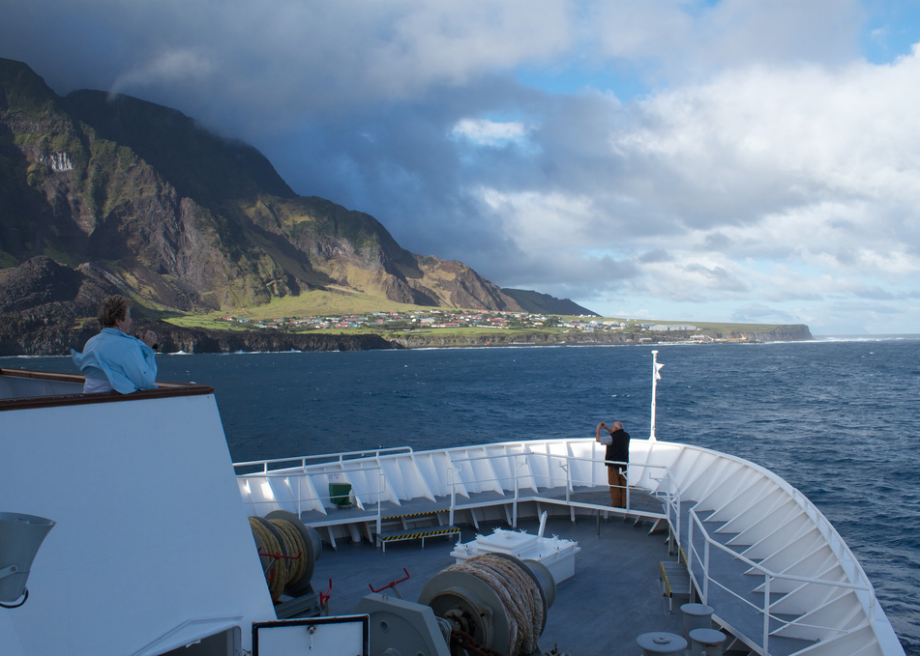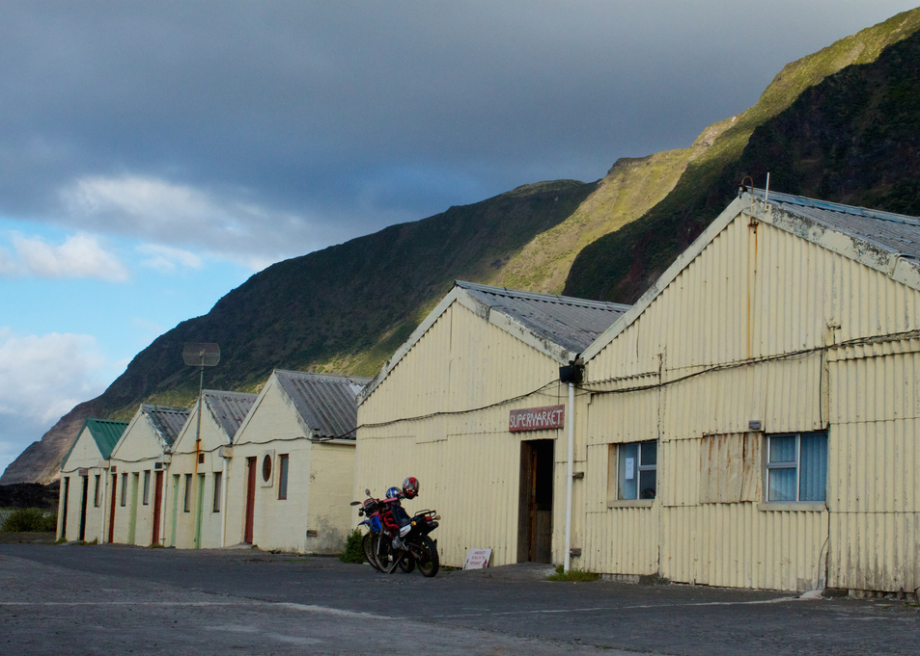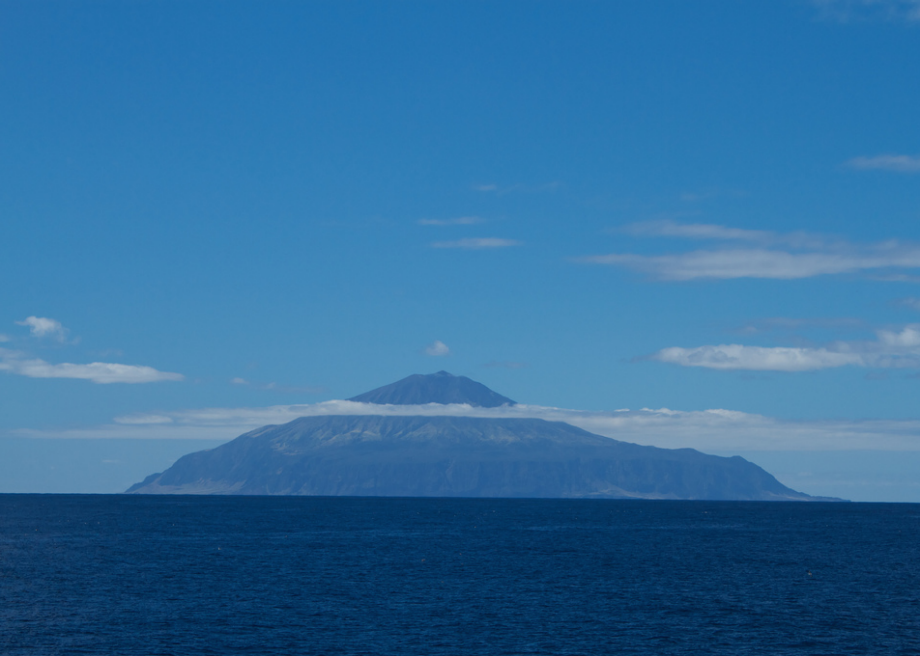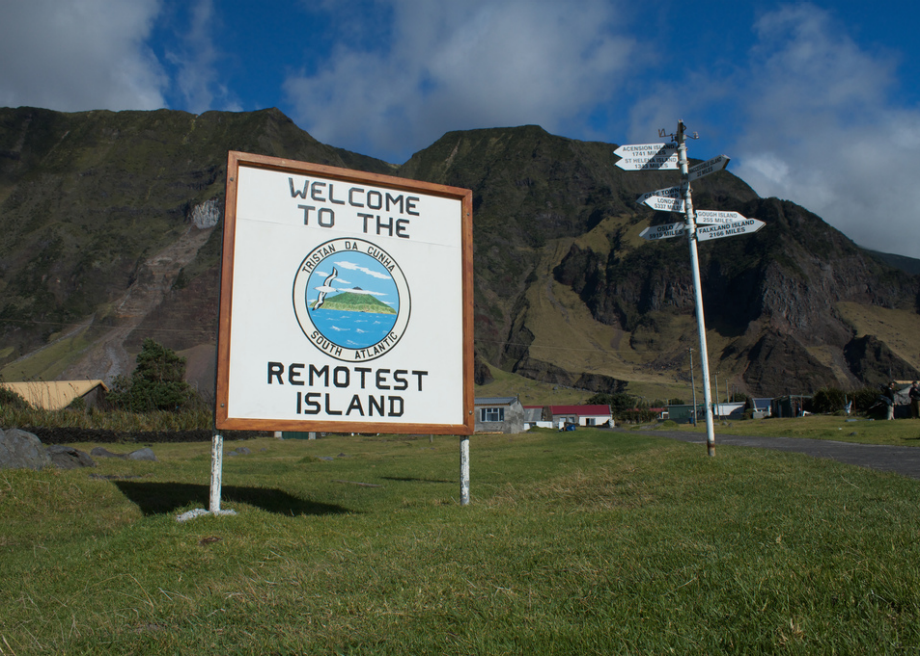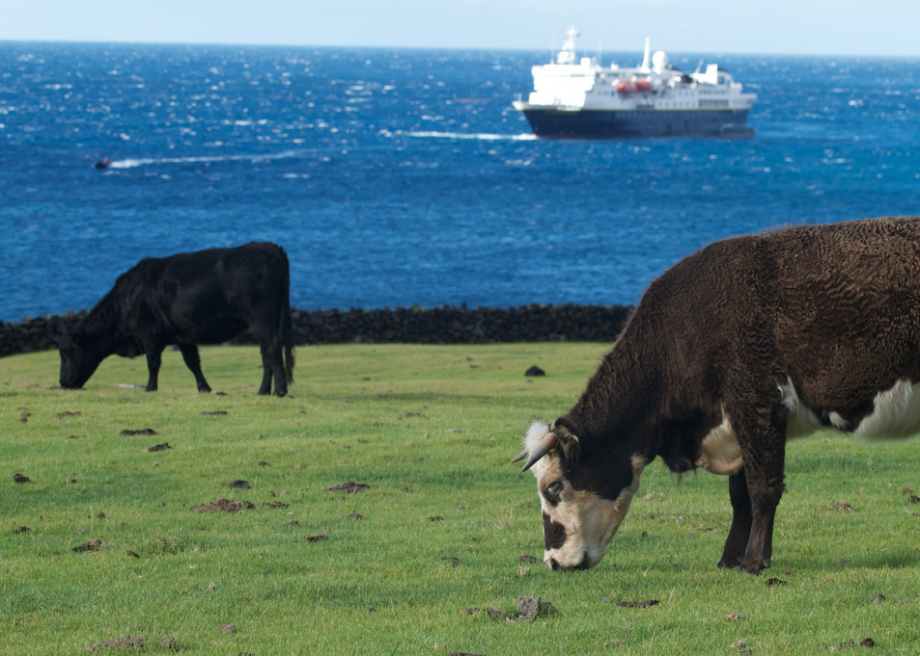Tristan da Cunha: Life on the World's Most Remote Island
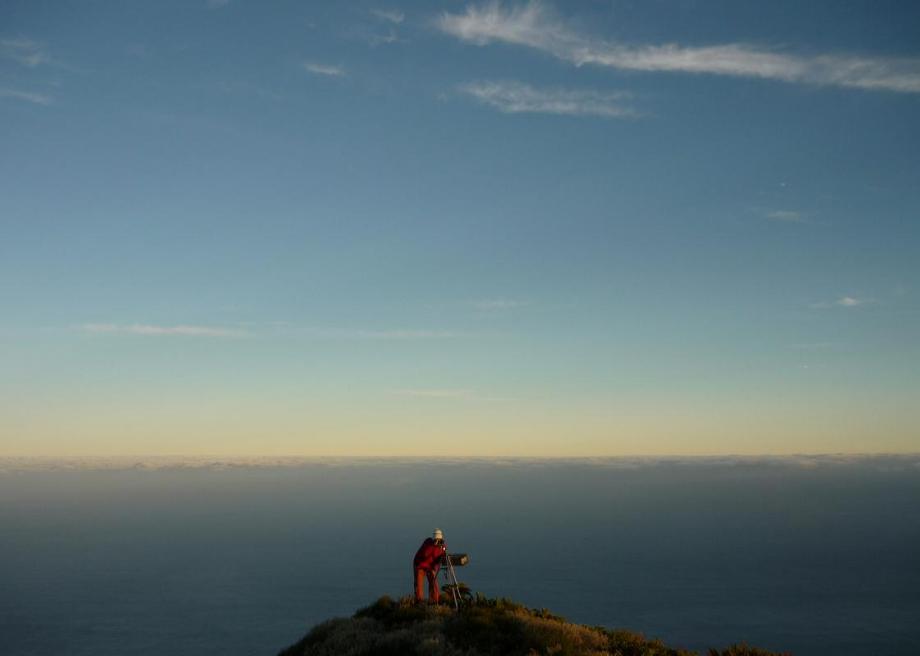
Atlas Obscura on Slate is a blog about the world's hidden wonders. Like us on Facebook, Tumblr, or follow us on Twitter @atlasobscura.
A stay on Tristan da Cunha is not your typical island vacation. There are no restaurants. There are no hotels. Credit cards are not accepted, the beaches aren't safe for swimming, and every month brings between 17 and 26 days of rain. Smack-dab in the middle of the island lies a giant volcano. But Tristan da Cunha is enticing because it offers something that no other island destination can: the most extreme isolation.
Located in the south Atlantic Ocean, the 8-mile-wide British overseas territory is the most remote populated island in the world. The nearest mainland city, 1,743 miles east, is Cape Town in South Africa. The journey from there takes seven days by boat—traveling by air is not an option, as there is no airport on the island.
Every inhabitant of Tristan da Cunha—269, at last count—lives in the island's only settlement, Edinburgh of the Seven Seas. Established in the early 19th century, the village is located on the north coast and home to 70 families, all of whom are farmers. Electricity is supplied by diesel generators. The island's lone road, a narrow, winding path, is flanked by bungalow-style cottages, potato patches and roaming cows. The looming volcanic cliffs and low-lying mist create a secluded, hazy setting.
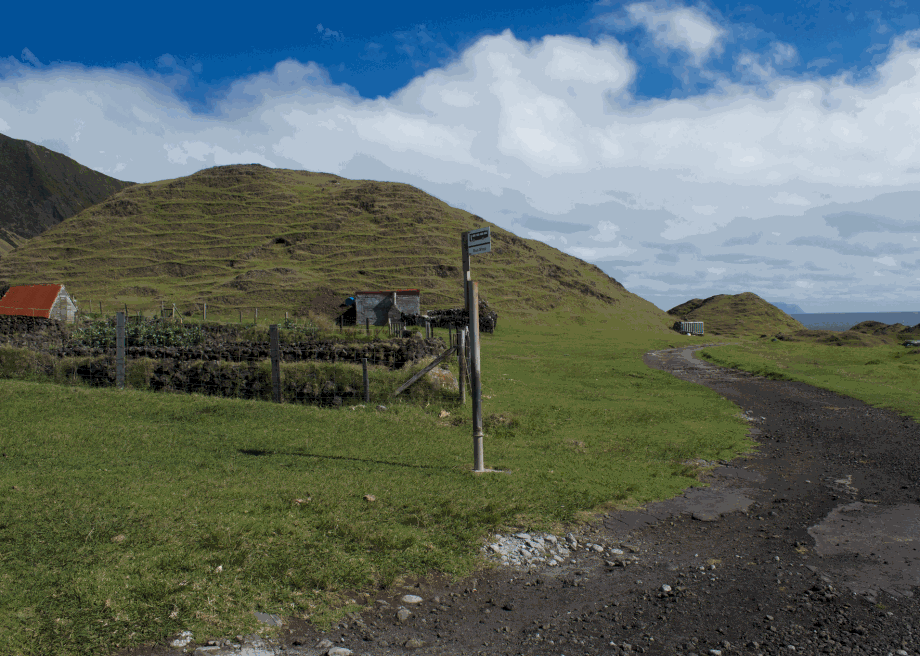
It's a peaceful, pared-back existence with few anxieties—unless the volcano erupts. Such was the case in 1961, when earthquakes, landslides, and an eruption from one of the north vents sent the entire population fleeing to England via Cape Town. (Fed up with England's busy streets and savage winters, most returned two years later after getting the all-clear from geologists who had visited the island post-eruption.)
Now that the volcano has calmed down, life on Tristan da Cunha is an exercise in patience and planning. There is a grocery store, but orders must be placed months in advance so the goods can be loaded onto scheduled fishing vessels and delivered. Bad weather can cause delays by making it impossible to land on the island. A hospital equipped with x-ray machines, a labor ward, operating theater, emergency room and dental treatment facilities takes care of most health concerns, but patients requiring more specialized treatment must be evacuated to South Africa or the UK.
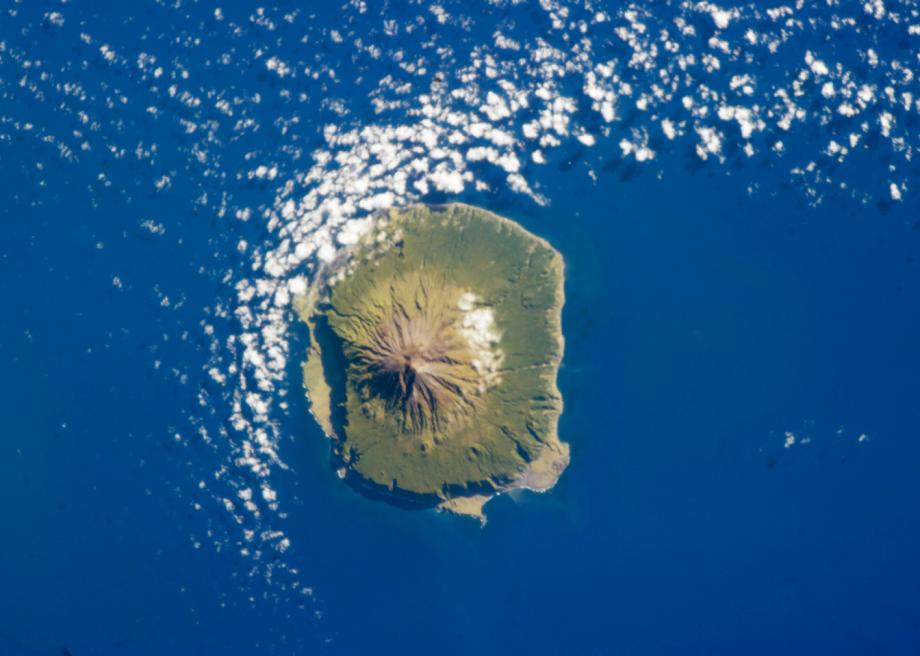
In addition to farming, residents sustain themselves by selling souvenirs, handcrafts, and rare Tristan da Cunha postage stamps online. Among the more distinctive souvenirs are the traditional "love socks" knitted by island women—the size and number of stripes on each pair of socks denotes a particular meaning, from "friends forever" to "head over heels in love."
If you'd like to experience Tristan da Cunha for yourself, study the shipping schedule and allow plenty of time to plan your journey.
